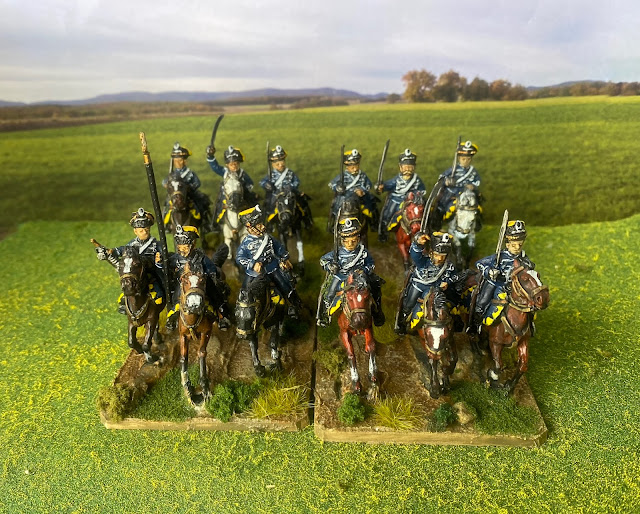The regiment had a solid history dating back to 1803 and the founding of the King’s German Legion. At the end of the Napoleonic Wars the veterans of the KGL were repatriated and the three hussar regiments were formed into the King’s Hussars and Guard Hussars in the Royal Hanoverian Army.
In 1866 the two regiments fought at Langensalza where the Royal Hanoverians inflicted the only tactical victory over the Prussians in the war. When Hanover was annexed by Prussia the two regiments were merged and became the 15th Hussars in Prussian service.
In 1870-71 the regiment was present at Spicheren, Colombey, Bois de Vaux, Gravelotte, Metz, Diedenhofen, Montmédy, Longwy, Noidant le Rocheux vor Langres, Dannemarie and Sombacourt. While the list of actions is significant the record of casualties for the entire war (5 killed, 7 wounded, 1 missing and 15 died of disease) indicates that the regiment saw little serious action.
In the Imperial Army the regiment was renamed Hussar Regiment "Queen Wilhelmina of the Netherlands" No. 15 in 1898. Twelve men from the regiment went in China 1900 where they fought in the Boxer Uprising. In the Great War it fought in the Marne campaign before transferring the eastern front where they fought around the Masurian Lakes in 1915. It was disbanded in 1919.
The regimental standard for this regiment has still not arrived and will be ‘presented’ in the fullness of time.





Very nice Mark, blue faces yellow is a simple yet eye catching combination and the Sharks tooth edging on the saddle clot is a nice detail. Are the cavalry for this collection also plastic?
ReplyDeleteThe yellow Shark’s tooth and the busby bag make them stand out, otherwise the uniform is quite bland. No only the infantry is in plastic.
DeleteNice work again Mark. That's quite a proud history for this regiment, although it must have been quite confusing for any new recruit to try to follow the lineage. Where are you purchasing the flags for these from?
ReplyDeletePerhaps the term “not yet arrived” is wrong…better would be hadn’t had time to print them yet! All done now. It must have been interesting indeed to trace the linkage, I know that the 17th hussars, the Black Brunswickers, still bore the honours “Peninsula, Sicily, Waterloo” on a banderole in 1870.
DeleteGreat work, Mark! Reminds me that I have a FPW Prussian army to start one day. Maybe 2023?
ReplyDeleteNo Jonathan you know you want those armies now….bring them forward in the queue!
DeleteNice historical background and splendid figures Mark!
ReplyDeleteThank you Phil.
DeleteNice work once again Mark. The cavalry casualties show how little action most units saw during the war, both 1866 and 1870, with a few exceptions of course. The following book is a fascinating read for those with interest in the period:
ReplyDeletehttps://www.helion.co.uk/military-history-books/the-studnitz-wars-the-wartime-journals-of-a-prussian-cavalry-general-1849-71.php
Indeed the German cavalry did not suffer the same level of loss as the French (Bredow’s Brigade excepted), but then they didn’t make as many suicidal attacks as the French. I must get hold of that book.
DeleteVery nice Mark…
ReplyDeleteThe yellow really brightens what would have been a relatively somber uniform…
All the best. Aly
It certainly does…I am just doing a unit of Swedish cavalry that have yellow details and they really come alive when the yellow goes on.
Delete